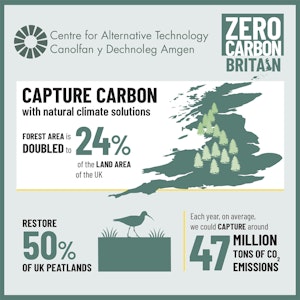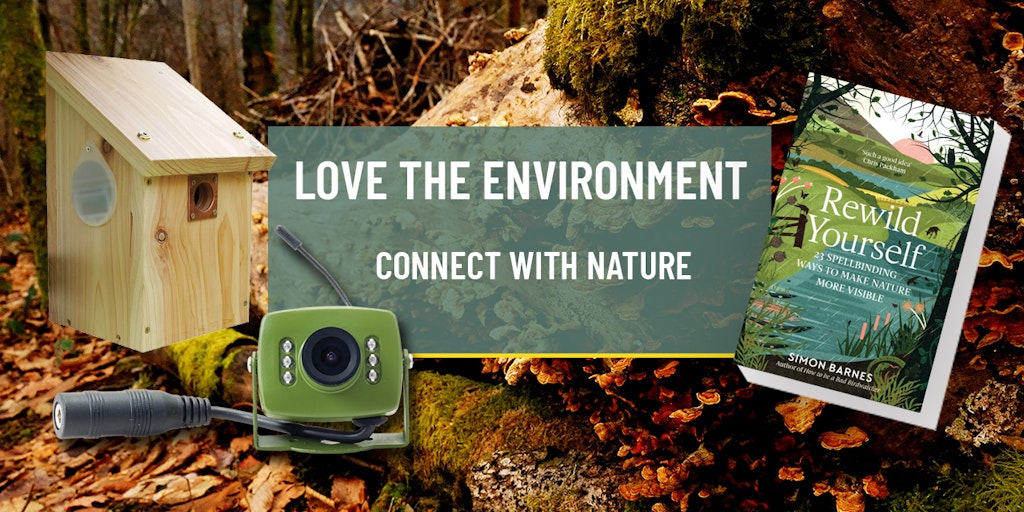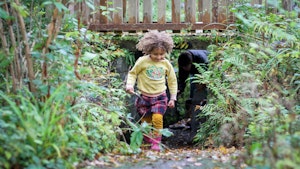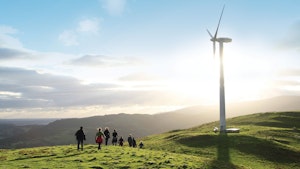After a difficult and strange year we’ll be rounding off 2020 with what is likely to be an equally strange festive period for many. Smaller gatherings and less travel might mean we can’t see loved ones face to face, but it doesn’t have to mean we can’t celebrate the festive season in other ways.
Borrowing the tune from a well-known Christmas jingle, we’ve put together 12 ways we can treat ourselves, our communities and our natural world this Christmas.

1. The carbon in the Christmas tree
Trees offer one of our best means of fighting climate change by absorbing and storing carbon dioxide. Research suggests that we will need to double the tree cover in the UK as part of the journey to zero carbon.
Removing one tree from this total might make little difference, but if we level this up to the annual average of eight million trees removed for Christmas, we can begin to undermine the benefit.
If you are buying a real tree, make sure you go for a UK grown and FSC approved tree from a sustainably managed woodland. At the end of the season, check your local council’s policy on Christmas tree collection to make sure it doesn’t end up in landfill, as rotting trees emit methane, a powerful greenhouse gas.
There are also options to rent a tree, or if you have the space keep your own potted tree to reuse every year.
Life cycle analysis suggests that if we use the same artificial tree for more than 5 – 10 years (estimates vary) it is less harmful in terms of greenhouse gas emissions than removing a tree from the ground each year, although plastic pollution also needs to be considered. If you already have a fake tree, keep using it, and if you want to switch try charity shops or second hand sites like freecycle, and look for ones using natural materials.

2. Two way gifts
Around 23 million unwanted gifts were destined for landfill last year. Whatever your tradition or feelings on gift giving, there are many ways to make presents fairer and happier for all. One way is to consider whether the object offers a ‘gift’ on both sides of the story – both pre and post giving.
For the person receiving the present, will they use it, love it and learn from it? Will it come to an end, and if so, how will they dispose of it? Is it something they could swap or donate? If you do receive something you don’t want or need, pass it on to someone who’ll like it more, or try a gift swap in your community.
Vouchers can offer a good answer, especially vouchers for courses or days out, cutting the chance of waste disposal and potential unwanted items. Gift membership to a charity they admire or follow gives the receiver knowledge, inspiration and entertainment while supporting organisations to carry out important conservation or social work.
Pre giving, consider materials, where objects are made and in what conditions. Are materials naturally and fairly sourced, are they recyclable or reusable, will they last? Are all workers receiving fair prices and working in good conditions? Look for cruelty free, Fairtrade, FSC and other ethical labels and certifications.
Could you #shoplocal and make your present a gift to the local economy? Many local shops have moved stock online to make shopping local more accessible. Secret santa can also be a fun option – buying or making one quality long lasting gift for one person each. Buying from environmental charity gift shops like CAT’s Ecostore is also a good way to ensure presents offer a gift on both sides.
If you have time to make and create presents, you’re instantly cutting out the environmental impact of manufacture and transport, and end with something personal and thoughtful.
3. Three ways to wrap
In 2004, DEFRA estimated that up to 83 sq km of wrapping paper ended up in landfill. Although recycling has improved since then, we could do more.
Try decorating scrap paper, or using newspaper and magazines to wrap cards and presents – less waste and more entertainment for the receiver. Use string in place of sellotape, or if using sellotape look for biodegradable paper and bio based ones.

You could forgo paper altogether and wrap your presents in another present – in a scarf, jumper or bag.
If buying new, look for 100% paper or other recyclable materials e.g paper that has no plastic coating or glitter.
4. Four, less is more
On our Zero Carbon Britain courses we explore the need to power up our renewable energy, and power down our energy demand from heating, building and transport to reach zero carbon.
We can apply the same model to other areas of life, including the festive period. Powering up our engagement with our local communities, in climate action, in social justice, and powering down our consumption of single-use items.
Buying, using and throwing away less stuff doesn’t have to mean an empty space with no presents. Look to ‘minimalist’ design and art movements – having fewer items means each is more celebrated. Focus on the things you want to celebrate, that feel good to do and aren’t harmful – if a Christmas tree is important to you, follow the tips above to select a positive one, then choose or make just a few decorations each.
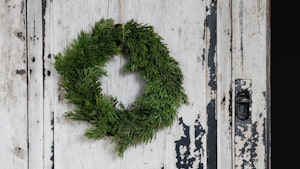
5. Time outside
As the days get shorter and the frosts set in, the focus turns to food, family and cosiness – all typically indoor activities. Growing bodies of research suggests time spent outdoors in nature has positive effects on our wellbeing, stress levels and physical health.
This year we enjoyed and celebrated all the amazing wildlife and nature CAT has to offer as one of the hosts of BBC Autumnwatch. Iolo Williams was based in our sustainably managed woodlands, and along with the other presenters explored key themes on how to #HelpNatureThrive and how nature can help our wellbeing.
If you’re able to, seek out your local park, woodland or community green space, and try taking food and family into the frost! We have plenty of family activities in our CAT at Home section to inspire everyone to connect to nature and enjoy some time outdoors. Try our sensory explorers, wild wellbeing, and wildlife presenter activities this winter.
6. Six geese a-playing
The diets and land use section of our latest Zero Carbon Britain report states that ‘through dietary change, food waste reduction and improved agricultural practices we could provide a healthy, sustainable diet for the whole UK population and cut greenhouse gas emissions from agriculture by 57% from 2017 levels’.
This would be made possible by consuming ‘less protein from meat and dairy (which have high emissions and use a lot of land) and more from plant based sources like beans, nuts, cereals and vegetables’.
There are now lots of meat free alternatives on the market to try this Christmas, both remakes of classic dishes, and non-traditional alternatives, or try making your own easy and delicious recipes from The Happy Pear or Plant Kitchen. When considering vegetables, look for locally and organically grown produce. Lockdown saw a big increase in home and community growing and local market gardens, projects that also help build community resilience.
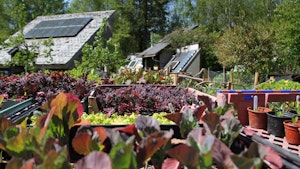
7. Get savvy seven
Gardening journalist, author and trainer Kim Stoddart recently presented the webinar How to be a climate change savvy gardener as part of our autumn free webinar series.
Kim offered simple and practical advice on how we can use what we already have and look to nature for answers to growing our own food and boosting wildlife and biodiversity in our gardens, and how all of this can benefit the planet and our own wellbeing.
Getting savvy at Christmas can also benefit the planet and our own wellbeing, as well as saving money. You could go for a winter woodland walk and collect leaves and twigs to make natural Christmas decorations, get creative and upcycle last year’s cards into present tags, or enjoy a family game of who can peel the most tape off wrapping paper to save for use next year…

Kim’s next webinar People, plate and planet: working with wildlife for the benefit of all on the veg patch takes place Thursday 4 February 2021 and you can book your free place now. Kim’s book The Climate Changer Gardener is also available to buy from our EcoStore.
8. Eight, participate
The Covid crisis has seen many communities coming together to offer practical support like food and prescription deliveries, but also solidarity and emotional support. Many of these projects will continue over Christmas, as well as long running charity projects such as Christmas meals for people who are homeless.
Check with groups in your local area through social media, newsletters or notice boards about ways to get involved if you can offer time over the festive period.
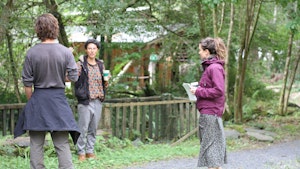
9. Be compassionate and political
The pandemic has pushed the total number of people in the UK living in poverty to more than 15 million – 23% of the population. Many families are facing their very first Christmas on benefits, while those who were already below the breadline have sunk even further into poverty. There are lots of charities up and down the country that collect Christmas presents for children who might not otherwise receive anything. If you’re in a position to, why not send a fun gift from CAT’s Ecostore or from a local sustainable toy shop.
We are facing multiple crises right now – coronavirus, high unemployment, inequality and the climate and biodiversity emergency. Join us here at CAT to campaign for the UK Government to #BuildBackBetter from the COVID-19 crisis and deliver a just transition to a Zero Carbon Britain.
10. Distanced dancing
Less travel this year not only means less air miles and pollution, but also more time freed up to use where it matters. Video call quizzes, games and dance parties can offer important connections with friends and family around the world, with many apps and video call platforms offering free set ups.
You could also use these platforms and time to reach out to old friends or those alone at Christmas.
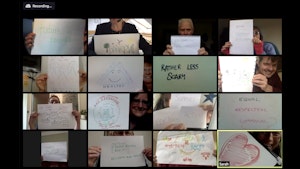
11. Your indoor heaven
Making your space cosy at Christmas shouldn’t cost the earth or your wallet. Our Zero Carbon Britain modelling suggests that ‘having high ‘Passivhaus’ standards for new buildings, retrofitting all existing buildings, and improving internal temperature control would reduce energy demand for heating by around 50%’. Long term government investment will be needed to make this available to all householders, including renters. If you’re interested in finding out what’s possible, the CAT Free Information Service offers independent and impartial advice on eco retrofit, internal and external wall insulation, windows and the different grants available.
As well as thinking of ways to save energy in the home, we can also think about where we get our energy supply. In our Zero Carbon future scenario, ‘we can supply 100% of the UK’s ‘powered down’ energy demand with renewable and carbon neutral energy sources’. Switching to a green tariff is a great way to support this transition.
If you’d like to explore options for renewable energy for your own home, CAT’s new series of short courses aims to demystify renewable energy and equip you with the skills and knowledge to implement different renewable technologies. The first weekend course Introduction to Household Renewables takes place in May 2021, followed by in-depth one day courses on wind power, solar PV, heat pumps and solar hot water.
12. Twelve months ahead
As we look to 2021, how can we extend these green festive tips into the year ahead? You could alter your diet to a low carbon one, retrofit and power down energy use in your home and communities, buy and consume less stuff, help wildlife in your area and get involved with local support groups.
We can certainly all try to do our bit and enjoy this festive period (as best we can under the circumstances), while making sure we take care of our own wellbeing, that of our communities and that of the planet. But our actions will not work alone.
We need to come together and make sure our voices are heard by those in power to ensure carbon emissions are reduced at the scale and speed required, and our natural world is restored. As citizens we can engage with our local councils, politicians, local industries and businesses, our banks and pension funds to demand the radical transformation required for a sustainable future for all.
What we do in the next decade will decide the quality of human life on earth for hundreds of years to come. In the run up to the climate summit in Glasgow next year COP 26 we must make sure the UK Government demonstrates true leadership with action. #TheTimeIsNow.
At CAT, we will be helping wildlife and biodiversity to thrive, informing the next generation of changemakers through our postgraduate courses, short courses and family activities and helping communities, councils and governments to implement their climate action plans. All of this is made possible through your support – thank you and warm wishes for the festive period.
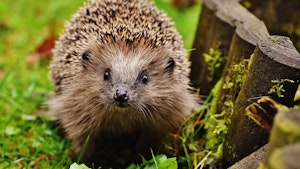
- Climate Change
- Food
- Nature and Wildlife
- Autumnwatch
Related Topics
Related Pages
Email Sign Up
Keep up to date with all the latest activities, events and online resources by signing up to our emails and following us on social media. And if you'd like to get involved and support our work, we'd love to welcome you as a CAT member.

